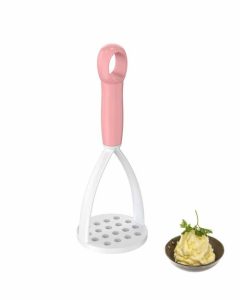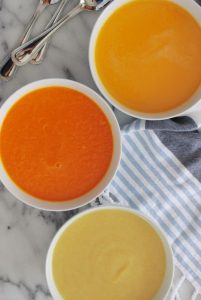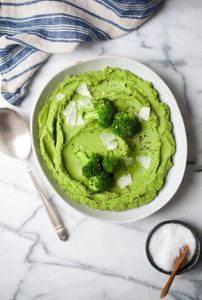Introduction
Vegetable purees are a delightful way to enjoy the goodness of vegetables. They’re smooth, easy to digest, and perfect for people of all ages, from babies just starting solids to adults seeking nutritious and flavorful side dishes. How to make a vegetable puree? This comprehensive guide explores everything you need to know about making delicious vegetable purees at home.
The Wonderful World of Vegetables
Vegetables come in a vast array of colors, textures, and flavors. Each vegetable offers unique health benefits. Here are some popular choices for making purees:
Root Vegetables:
Carrots, potatoes, sweet potatoes, beets, and parsnips lend sweetness and earthiness to purees.
Cruciferous Vegetables:
Broccoli, cauliflower, and Brussels sprouts add a touch of peppery flavor.
Green Vegetables:
Green beans, peas, and spinach are packed with vitamins and minerals and create vibrant green purees.

Choosing the Right Vegetables for Pureeing
When selecting vegetables for purees, consider these factors:
- Ripeness: Ripe vegetables have the best flavor and texture for pureeing.
- Freshness: Fresh vegetables will yield the most vibrant colors and flavors.
- Variety: Experiment with different vegetables to create unique flavor combinations.
Tips for Preparing Vegetables for Pureeing
- Washing: Wash vegetables thoroughly under clean running water to remove dirt and debris.
- Peeling (Optional): Peeling is optional for some vegetables like potatoes and carrots. You can leave the skin on for added nutrients in some cases.
- Chopping: Chop vegetables into evenly sized pieces for even cooking.

Cooking Methods for Perfect Purees
There are several ways to cook vegetables for pureeing:
Boiling:
A simple and effective method. Boil vegetables in water until tender.
Steaming:
Steaming preserves more nutrients than boiling. Steam vegetables in a steamer basket until tender.
Roasting:
Roasting brings out the natural sweetness of vegetables. Roast vegetables on a baking sheet until tender and slightly browned.
Transforming Cooked Veggies into Puree Bliss
Once your vegetables are cooked, it’s time to create the puree! Here are some methods:
- Immersion Blender: An immersion blender allows you to puree vegetables directly in the pot, minimizing mess.
- Food Processor: A food processor offers more control over the texture of the puree. Pulse the cooked vegetables until you reach the desired consistency.
- Blender: A traditional blender works well for pureeing smaller quantities of cooked vegetables.

Achieving the Perfect Puree Texture
The desired texture of your puree depends on your preference.
- For Babies: A very smooth puree is ideal for babies just starting solids.
- For Adults: You can leave the puree slightly chunky for a more interesting texture.
Flavor Boosters for Your Puree
While vegetable purees are delicious on their own, you can add some flavor enhancers:
- Herbs and Spices: A sprinkle of fresh herbs like parsley or basil, or a pinch of spices like garlic powder or paprika can elevate the flavor profile.
- Citrus Juice: A squeeze of lemon or lime juice can add a touch of brightness.
- Healthy Fats: A drizzle of olive oil or a dollop of avocado can add richness and healthy fats.
Important Note: Always consult a doctor or registered dietitian before introducing solid foods to babies.
The Joy of Puree Creations
With a little practice, you can become a vegetable puree pro! Here are some puree creation ideas:
- Classic Carrot Puree: A simple and nutritious puree perfect for babies and adults alike.
- Roasted Butternut Squash Puree: The natural sweetness of roasted butternut squash makes a delightful puree.
- Broccoli and Cheese Puree: A creamy and cheesy puree that kids will love.
- Green Pea and Mint Puree: A vibrant green puree with a refreshing mint flavor.

Vegetable purees are a delicious and versatile way to incorporate more vegetables into your diet. With a variety of vegetables, cooking methods, and flavor boosters at your disposal, the possibilities for creating delicious purees are endless. So, grab your favorite vegetables and get creative in the kitchen!
Adding Magic to Your Purees: Simple Flavor Boosters
While veggie purees are delicious on their own, there are ways to add exciting twists! Here are some ideas that are safe for all ages:
-
Herbs and Spices: Explore a world of flavor with fresh or dried herbs. Parsley, basil, dill, or a pinch of garlic powder or paprika can add a new dimension to your puree.
-
Creamy Additions: For a richer texture, consider adding healthy fats like avocado or a dollop of nut butter (check for nut allergies first).
-
Citrus Zest: A squeeze of lemon or lime zest can add a burst of brightness without adding extra juice’s acidity.
-
Roasted Goodness: Roasting vegetables before pureeing can caramelize natural sugars, creating a deeper, sweeter flavor.
Puree Inspiration: Flavorful Combinations
Now that you have some flavor booster ideas, let’s explore some puree recipe inspiration!
-
Classic Carrot Puree: This simple puree is perfect for introducing babies to solids or for a quick and nutritious side dish. Steam or boil carrots until tender, then puree with a little water or breast milk (for babies) for a smooth consistency.
-
Sweet Potato Sunshine: Roasted sweet potatoes have a naturally sweet flavor. Roast sweet potato cubes until tender, then puree with a sprinkle of cinnamon for a warm and comforting puree.
-
Green Power: For a vibrant green puree, try steaming broccoli or spinach. Puree with a squeeze of lemon zest for a bright and refreshing flavor.
Important Note: Always consult a doctor or registered dietitian before introducing solid foods to babies. They can provide specific guidance based on your baby’s development.

Beyond the Basics: Puree Perfection
With a little practice, you can become a vegetable puree master! Here are some final tips:
- Experiment with Textures: Depending on your preference, you can leave the puree slightly chunky for a more interesting texture. This can be especially enjoyable for older babies and adults.
- Get Creative with Toppings: Once your puree is ready, consider adding some fun toppings! Chopped fresh herbs, a sprinkle of cheese, or a dollop of plain yogurt can add another layer of flavor and texture.
- Freeze for Later: Purees freeze well! Portion leftover puree into freezer-safe containers for quick and easy meals or snacks later.
Conclusion
Making vegetable purees is a fun and rewarding way to explore the world of healthy eating. With these tips and recipe ideas, you can create delicious and nutritious purees for yourself or your little one. So grab your favorite vegetables and get creative in the kitchen! You’ll be a puree pro in no time.
